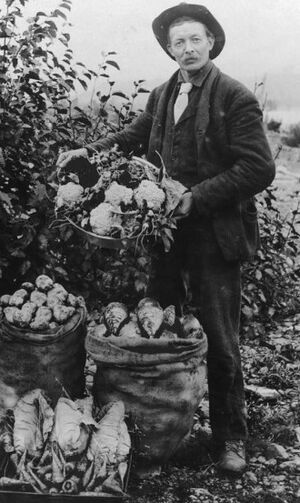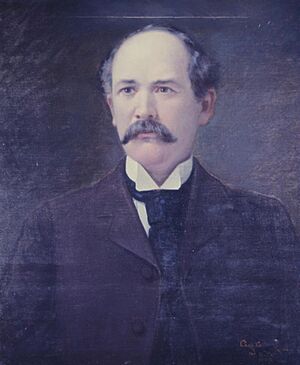History of Italians in Mississippi facts for kids
The History of Italians in Mississippi tells the story of Italian people who moved to the state of Mississippi in the southern United States. These immigrants faced many challenges as they tried to fit into a new country. At the same time, they worked hard to keep their Italian identity, culture, and traditions alive. Italians played a big part in building and improving the Mississippi region.

Contents
Italian Immigrants Arrive in Mississippi
In the 1800s, many Italians came to the United States. They often arrived in New Orleans and then traveled to Mississippi. By the time the American Civil War began, over 100 Italian immigrants were living in Mississippi. In the late 1800s, even more Italians came to the U.S., which had a big impact on the area.
Some Italian immigrants worked on cotton farms in the "Mississippi Delta" region. They even helped create blues music, sometimes playing instruments like the mandolin.
Many Italians from Sicily settled along the Mississippi Gulf Coast in towns like Biloxi, Ocean Springs, and Gulfport. They worked in fishing and canning factories. Others became shop owners, running grocery stores or tobacco shops. The growing tourism in Biloxi in the early 1900s also created new chances for young Italian men.
Italians also settled in the Mississippi Delta. The first ones arrived in the 1880s. They helped fix river banks (called levees) and worked as farmhands on large plantations. Some families became peddlers, selling goods to farmers. In 1895, the first Italians came to the Sunnyside Plantation, which was across the Mississippi River in Arkansas. This plantation became an important stop for many Italian settlers on both sides of the river. Most of these farmers came from central Italy.
Strong Catholic Faith
Most people in Italy are Roman Catholics. So, when Italians moved to Mississippi, they brought their Catholic faith with them. The Catholic Church helped these immigrants and their children a lot. Even though there aren't a huge number of Catholics in Mississippi, Italians are a very important group in many Catholic churches across the state.
Sicilian Families in Towns
Greenville, Mississippi, had the most Sicilian immigrants in the Delta region. Many Sicilians first settled in New Orleans and worked in sugar cane and cotton fields. Later, when they came to the Delta, they started living in towns. This allowed them to open grocery stores, restaurants, and fruit stands. Because they lived in towns instead of on farms, they could get a better education, which they used to their advantage.
These opportunities helped young Sicilian immigrants grow up, get settled, and find jobs much faster than Italians from central Italy. Sicilians also kept strong connections with their home country even after moving to America.
Italians Shaping the Delta Region
Around the 1880s, the first Italian immigrants made their homes in the Mississippi Delta. Many were hired to work as farm laborers on big plantations. Others became peddlers, selling items to farmers. Italians worked hard to keep three important traditions alive after moving to the United States: their religion, their family ties, and their farming skills.
By 1910, about 115,000 immigrants from Southern and Eastern Europe had settled in the eleven states that were once part of the Confederate States of America. Italians were the largest group, with over 44,000 people. They mostly lived along the Gulf Coast and in the Mississippi River Valley. Many of these Italians stayed and became independent farmers.
Italians had a big impact on the Mississippi Delta region. They created a strong farming culture by using the rich soil. While they learned some Southern traditions, they also made sure to keep their own rich Italian culture.
How Italian Immigrants Were Seen
During the time when many immigrants came to the United States, Italians often faced unfair treatment. This included problems finding housing, being accepted by society, and getting jobs. People in Mississippi had different ideas about the Italian settlers in the 1900s. Many untrue ideas (stereotypes) spread about them. Italians faced unfair treatment and strong dislike because of their background.
The first generation of Italian immigrants often became farmers, grocers, and shopkeepers. The next generation became doctors, bankers, and lawyers. One Italian American even reached a high political position in Mississippi: Andrew Longino, who was the state's governor from 1900 to 1904.
The Ku Klux Klan, a hate group, often targeted Catholics, including Italians. Italians were sometimes unfairly seen as violent or unclean. Newspapers sometimes made up exciting stories and headlines to make Italian immigrants look bad. Because of their darker skin and hair, Italians were sometimes treated as less important than people from northern Europe. Italian tenant farmers often did the same work as African Americans, which meant both groups were at the bottom of the social ladder.
Italian Americans often faced unfair treatment, economic hardship, and sometimes even violence, especially in the South. Mississippi and nearby Louisiana were no different.
Difficult Times and Integration
In 1891, a very sad event happened in New Orleans. Eleven Italian immigrants were killed by a mob because they were wrongly accused of being involved in the murder of a police chief. This was one of the largest mass killings in U.S. history. The killings happened after nine of the immigrants were found not guilty in court.
Nine Italians, some from the Mississippi Delta, were thought to have killed police chief David Hennessy. They were arrested, tried, and found innocent. After the trial, a large crowd broke into the jail and killed them, along with two other Italians who were in jail for different reasons.
After this, hundreds of Italian immigrants, many of whom were not criminals, were arrested by the police, even in Mississippi.
Later, in 1899, in Tallulah, Louisiana, near the Mississippi border, five Italian Americans were killed by a group of people for a crime they were accused of. Three shopkeepers and two bystanders, all Italian Americans, were killed. In 1901, some Italians were also killed in Erwin, Mississippi.
Becoming Part of Society
In the 1900s, especially after World War I, Italians began to be accepted and fit in very well with Mississippi society. They had great success and made a lot of money in the food and restaurant business.
The seafood and small shipyard businesses in Biloxi, Mississippi were largely owned by the family of Andrew H. Longino. He was the governor of Mississippi from 1900 to 1904 and was the first governor of a U.S. Southern state with Italian roots.
One of the most important Italian families in Mississippi was the Bruninis of Vicksburg. They produced a respected Catholic leader, Joseph Bernard Brunini. He was the bishop of the Natchez-Jackson Diocese from 1966 to 1984. Bishop Brunini worked hard to help black people and other minority groups be treated fairly in the 1980s.
Images for kids




